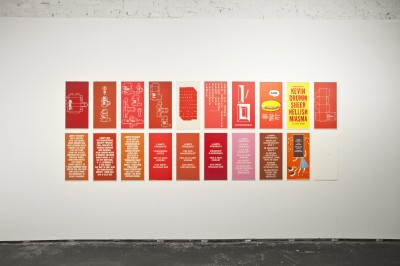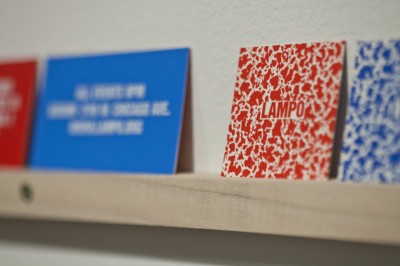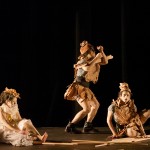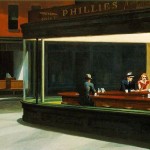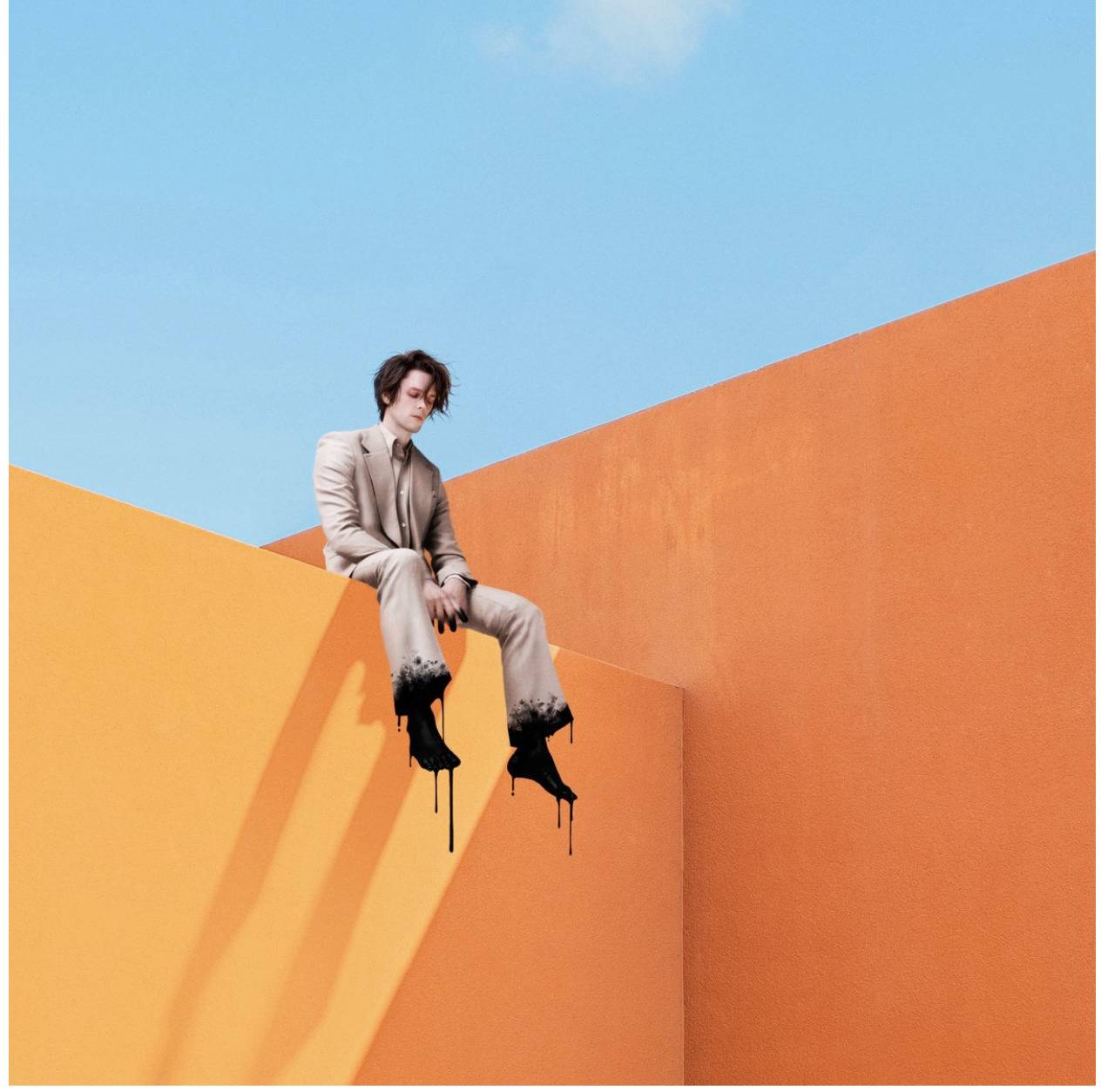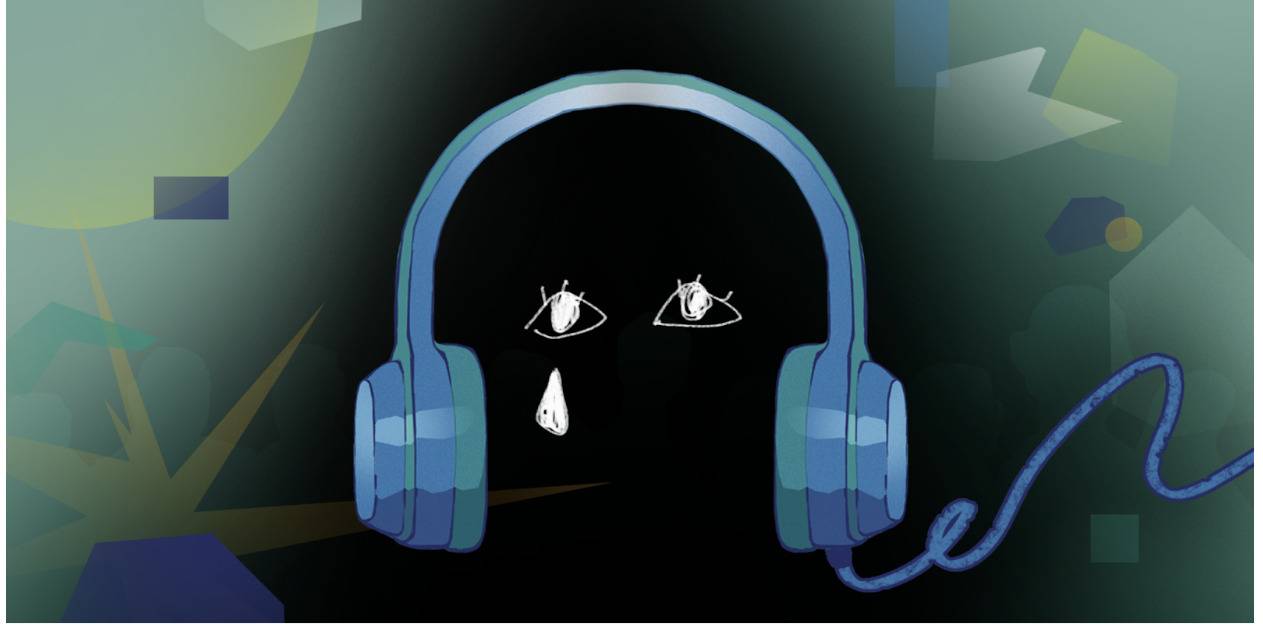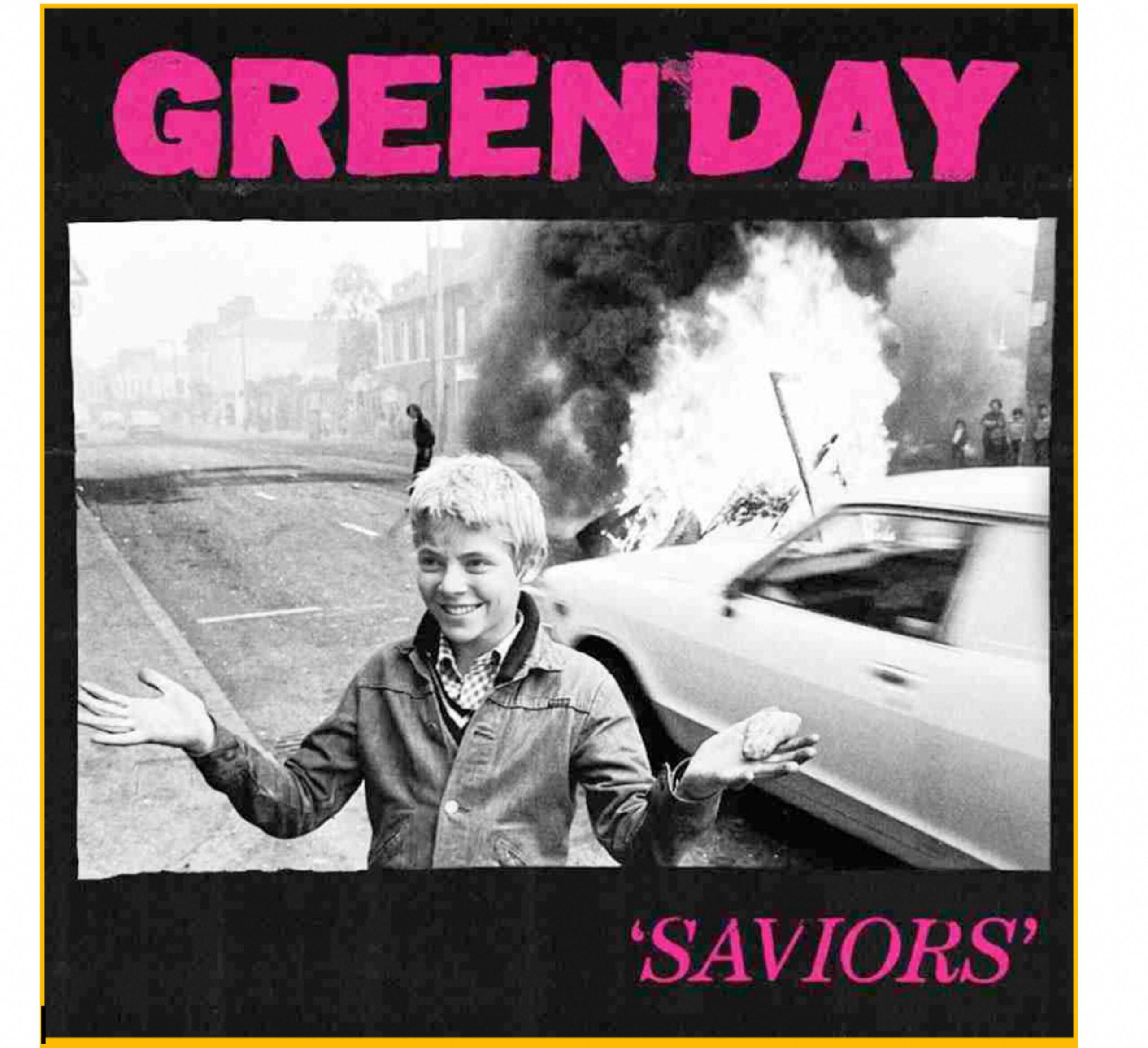
Eli Keszler performing at the Post Family Gallery on November 16, as part of Lampo’s 2013 series of events.
On a cold and rainy evening in November I made my way to an industrial building in West Town to hear Eli Keszler play with piano wires strewn in geometrically intriguing lines and rattle crotales. Last year I happened to see him play at Printed Matter during the Chelsea Sound festival in New York, so it seemed especially appropriate that this next encounter of the percussionist and composer’s work took place as the opening moment for an exhibition of Lampo’s own printed materials, Reading Lampo/Selections from the archive 1997-2013.
Lampo’s assorted posters and cards from the past 16 years (available to view by appointment until January 17) lined the front room of the Post Family Gallery, a space maintained by a cohort of graphic designers in 1821 West Hubbard, a complex of small arts organizations. A letterpress and other high quality printing facilities were tidily stored in different rooms of the space. Andrew Fenchel and Alisa Wolfson, the respective coordinator and designer of Lampo, were chatting at the bar or arranging the Folios documenting Lampo Performances.
Using Helvetica type meant to reflect “municipal signage and small business” and appear “practical and approachable” according to the Lampo design manifesto, the early posters are all screen printed simple mono or duo-tone. The artists names and the dates of performance are the only words that appear in these promotions. Later posters keep artifacts of the screen printed aesthetic, such as borders and simple tonality.
Artist Martine Syms, an SAIC alumna and founder of the now defunct artist print materials venue Golden Age, produced a text for a large format double sided, orangey-red risograph printed poster that says what it does. Its the promotional for the exhibition. “Much like Lampo manifests the artists and patrons in a form of a social situation, its design makes the program visible. A play on enlightenment, Lampo means “lamp” in the utopian language of Esperanto. Lampo is a beacon and without a design we wouldn’t be able to see it.”
The largest room of the Post Family Gallery, with rows of chairs set opposite each other and a donations only bar along the right side is beginning to fill. A small gas fire burns in the corner. A drum kit sits in the center of the room beneath an elaborate striated web of piano wires. The wires are attached at one end to the thick ventilation conduction tubes on the ceiling, or other exposed thin pipes for gas and water. At the other, they are attached to a column, alongside solenoids and microcontroller devices. Keszler appears in a tidy outfit, a white shirt and slacks reminiscent of a traditional classical musician’s outfit. He sits down and begins to spin crotales on the surface of a snare. He flips them with the sticks. We hear the diminishing frequencies of the slowing down metal discs as they spin and the rattling of the snare’s chain. The subtleties between the flat and bulbous side of the cratoles, the metal rims of the drums and the variations in tone possible along the radius of the drums’ surfaces are exploited for the complexity within these simple ingredients. Keszler uses a number of different sized cratoles, and bows them as well as the toms and snare. He enters a state of frenzy, throwing the crotales like tops and frenetically rattling the kit.
The speakers from the sides of the room begin to bellow with animal-like roars. The ferocious groans are actually caused by an interaction between the piano wire and the ventilation pipes, amplified with contact pickups. As the piano strings tensioned above the audience begin to oscillate with solenoid hits and plucks, the pipes respond and the building becomes a filter and resonator for this additional layer of slow percussive activity. The concert ends suddenly, after an hour of playing Keszler appears to be only slightly winded.
Fenchel , in a recent Bad at Sports interview, spoke of subtle meanings in the graphic design choices for the publications that surround the Lampo’s live sonic events. He says, “I am interested in the relationship between the live experience, the memory of that experience, and the tangible printed remains. We brought that present and past idea into our design. Like any time-based event that happens and then is over and done, there is the act of reading the words on the poster, and then later an understanding that now it has been read, or red — a color we use a lot. It was kind of a private joke.”
Syms’ text mentions the appeal of revisiting the archive of materials that have documented Lampo’s events over the years with a phrase chosen from one of their documentary Folios, “Kasper Toeplitz at the Odum, when his bass got so loud that ceiling dust snowed down on his mohawk.” This is the beauty of attending a live music event rather than listening to a recording. Wolfson (in the same BAS interview) mentions that Fenchel and herself “both love Fluxus and were inspired by its focus on live performance and dedication to capturing the moment through print.” The surroundings and the people become essential elements of the event, all brought together under the auspices of a particular performer, and the series itself.
Afterwards the crowd lingers at the bar, and drifts into the exhibition space, reminiscing, recalling, and discussing. People gather around the print sales table, eagerly collecting posters, Folios, CDs, records and Keszler’s graphic scores. The ephemera of promotional material becomes a score for the documentary folios that followed. There is no way of telling exactly what the elements will do when combined, but the recipe is there. Entering the wet parking lot, actual tumbleweeds roll past, and I think about the “event scores” on the walls of the gallery, and am happy that there is some documentation of these unique experimental music events. Print can only go so far in capturing the feeling of “being there,” but in its selectivity and simplicity, Lampo have done a pretty good job with their materials that allow for the both uncertainty of expectation and the specificity of individual memory.

